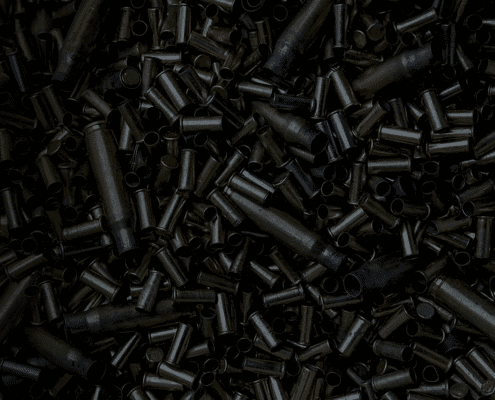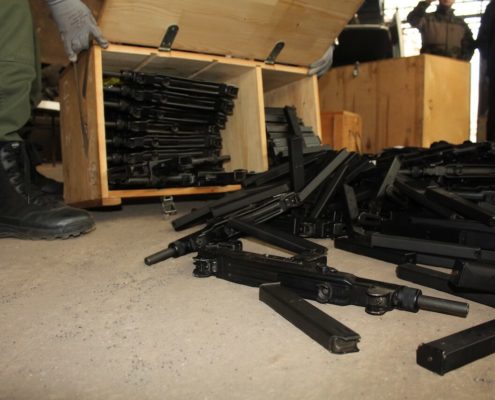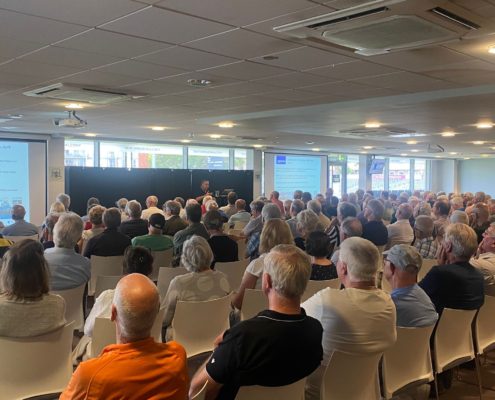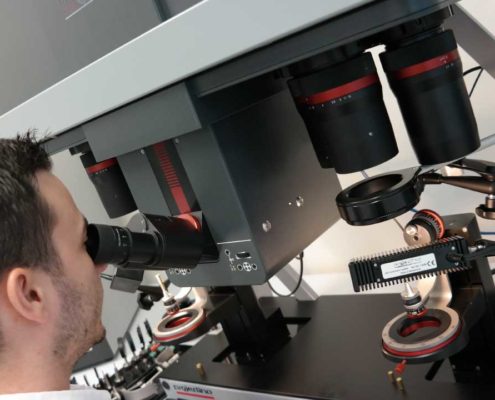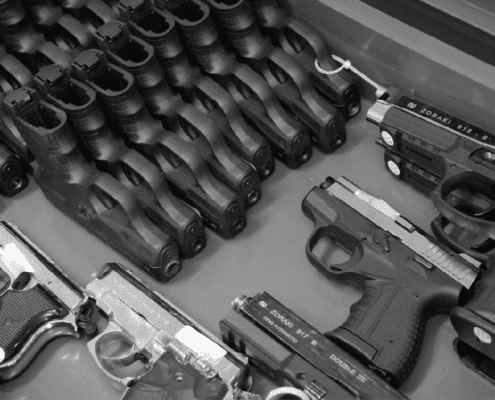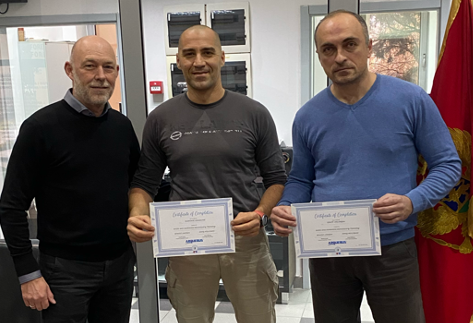 https://arquebus.uk/wp-content/uploads/2025/02/Picture-1-3.png
323
473
Rohan Harvey
https://arquebus.uk/wp-content/uploads/2022/02/Asset-1arquebus_logo.svg
Rohan Harvey2025-02-10 10:04:322025-02-10 15:23:07Arquebus Delivers Ballistic Examination Training in Montenegro
https://arquebus.uk/wp-content/uploads/2025/02/Picture-1-3.png
323
473
Rohan Harvey
https://arquebus.uk/wp-content/uploads/2022/02/Asset-1arquebus_logo.svg
Rohan Harvey2025-02-10 10:04:322025-02-10 15:23:07Arquebus Delivers Ballistic Examination Training in MontenegroOver the last twelve months, Arquebus has published a series of blog posts on how jurisdictions can effectively control small arms, light weapons and their ancillaries (SALW) via the development and implementation of a comprehensive National SALW Control Strategy (NSCS). The success of an NSCS is contingent on it being designed to respond to the specific SALW-related challenges and capabilities in a jurisdiction, as well as policymakers and practitioners taking a proactive approach to monitoring, evaluating and investing in SALW control interventions to ensure that they remain fit for purpose.
§
SALW control represents an important aspect of the global peace and security agenda. UN Social Development Goal 16.4 includes the aim to “significantly reduce” illicit arms flows by 2030. Similarly, Action 7 of the UN New Agenda for Peace strives to “reduce the human cost of weapons”, recognising their role in enabling armed conflict and violence. However, efforts solely at the international level are not enough to significantly mitigate the human, economic and societal impact of SALW misuse.
Throughout 2024, Arquebus has published monthly blog posts on the core building blocks of a NSCS, discussing how jurisdictions can leverage data, personnel, technology, and frameworks to control SALW at the national level. Whilst the necessity of each building block is highly dependent on the local context and capacity of the jurisdiction in question, these blogs described how jurisdictions can build the national intelligence picture on SALW, driving upstream activity to minimise and prevent SALW diversion, illicit manufacture, trafficking, and misuse.
The NSCS series has shared important insights from within the Arquebus team, as well as consulting international experts in SALW control. In doing so, these blogs have provided practitioners and policymakers with considerations, sources of best practice, and relevant case studies regarding the effective design and implementation of an NSCS. The following provides an overview of the building blocks covered within the series:
-
- Our first blog in the NSCS series introduced the NSCS concept, explained the varying types of NSCS, and emphasised the importance of ensuring a NSCS is designed to reflect a jurisdiction’s requirements and capacity.
- In NSCS 2: Civilian Licencing and Registration, we spoke to Adrian Whiting QPM to discuss the implementation of an effective civilian licensing and registration system. In it, Adrian discussed the importance of integrating civilian firearm licensing and registration systems with other relevant databases such as identification, criminal intelligence, court and health records.
- For NSCS 3: State SALW Lifecycle Management, we covered the threat posed by the diversion of state-held SALW into illicit circulation, and how high-fidelity, digitalised registration systems provide a clear audit trail to help deter and disrupt SALW diversion.
- Our in-house experts on ballistics, Glenn Lawrence and Dr. Joanne Short, discussed how forensics can support an NSCS in NSCS 4: Ballistics Forensics. They explained the key outputs of forensic laboratories and how various forensic disciplines can be integrated to develop actionable ‘inside and outside the gun’ intelligence.
- We talked to Major Lorenzo Benedet of the Spanish Guardia Civil in NSCS 5: National Firearm Focal Points (NFFPs). He highlighted how intelligence collated and developed by NFFPs informs upstream activity, playing a key role in informing the implementation of the EU’s Administrative Approach within a jurisdiction.
- NSCS 6: Marking SALW and their Ancillaries saw us talk to Henry Leach from Conflict Armament Research (CAR) about SALW marking. He explained the role marking plays in generating accountability for state-held SALW in fragile contexts like Somalia, as well as its practical use in discerning the providence of SALW used by non-state armed groups.
- In NSCS 7: Legal Test-fire Programmes, we discussed the key considerations jurisdictions should make when conducting a legal-test fire programme (LTFP). In it, we explored how the collection of SALW test-fire controls and subsequent cross-checking with recovered ballistic material can support intelligence-led policing regarding the criminal misuse of SALW.
- As part of NSCS 8: Physical Security and Stockpile Management (PSSM), we interviewed Clinton Brunt from Mines Advisory Group (MAG) to talk about how PSSM can support a NSCS. He noted the importance of ‘quick wins’; expedient, low-cost measures which yield positive impact.
- In NSCS 9: SALW Collection and Destruction, David Hutchinson, from the HALO Trust, explained the role risk management plays in SALW collection and destruction projects, and how strict protocols on the handling, transport, and destruction of SALW can help improve the safety of the public and practitioners during programmes.
- For NSCS 10: International Cooperation and Information Exchange, we interviewed EMPACT Firearms Driver and Guardia Civil Major Adriana Toston Diez to explore the role of international frameworks in building the collective intelligence picture on SALW. She explained the emerging SALW challenges Europe is facing regarding counterfeit firearms, 3D-printed weapons, and the war in Ukraine, as well as EMPACT activities to strengthen regional security.
- Finally, in NSCS 11: National Legislative Frameworks (NLFs)Arquebus Chair and Co-Founder, Paul James, discussed how intelligence-led policing (ILP) can inform the development of a jurisdiction’s legal SALW control regime. He shared his experiences in influencing NLFs as the former Head of the UK’s National Ballistics Intelligence Service (NABIS) and discussed the varying roles of the prosecutor in SALW investigations across different jurisdictions.
Whilst the NSCS series has covered common building blocks that can be crucial to successfully controlling SALW, the effectiveness of a NSCS hinges on tailoring its scope and implementation to reflect the unique context of the jurisdiction. A NSCS should always begin with a comprehensive scoping mission to ensure that the objectives are relevant and responsive to the local jurisdiction’s situation, and that any interventions made are sensitive to the potential impacts upon its target population. If designed well, the SALW control building blocks should work alongside any other security and development interventions to minimise and prevent armed violence.
The scoping mission component of NSCS should begin with a SALW survey. Its focus is collecting and analysing comprehensive data to understand the nature and scale of the challenges posed by the possession and use of SALW within a jurisdiction, as well as discerning the capabilities of national authorities. MOSAIC 5.10 and the UNDP SEESAC SALW Survey Protocol suggest several data collection and analysis tools that practitioners can utilise during this process, including:
- A contextual analysis considering the conflict and security, political, economic, social, cultural, and environmental factors that might affect SALW possession and use within a jurisdiction.
- A distribution assessment exploring the type, quantity, movement, and possession of SALW in the surveyed area on an intersectional basis.
- An impact survey covering the direct and indirect effects of SALW on men, boys, women, girls, and vulnerable groups, and on socio-economic development, as well as the causes of these effects.
- A perceptions survey on the prevalence of ‘gun culture’ and the differential attitudes towards SALW and armed violence amongst diverse groups, as well as possible interventions to address them.
- A capacity assessment targeting the resources and capabilities of stakeholders to respond to SALW issues, as well as identifying any challenges, with a focus on people, framework, and technology.
Alongside these core components of the SALW Survey, other tools may also be utilised that are relevant to the local context of the jurisdiction being surveyed. For example, practitioners might assess SALW-related risks in conflict-prone and high-risk areas using the UNIDIR Arms-Related Risk Analysis Toolkit, which contains guidance on how to collect and interpret arms-related information for conflict prevention efforts.
By following a data-led approach, SALW surveys enable the initial scoping mission to develop a NSCS ‘blueprint’ that is reflective of a jurisdiction’s SALW-related challenges, capacity, and the needs of relevant stakeholders. The resultant scoping mission report should provide detail on recommended NSCS building blocks that are evidenced and costed, when possible, and a phased delivery plan and a timetable for implementation.
However, depending on the existing capabilities of the target jurisdiction, the development and implementation of a NSCS may take several years to complete. A key activity of the scoping mission is to identify a series of interim measures; temporary high-impact actions focussed on supporting sustainable, long-term solutions where possible.
For example, in circumstances where a jurisdiction has limited national capability in the forensic analysis of recovered ballistic material, outsourcing ballistics forensics to an independent provider may relieve overwhelmed national resources, allowing national resources to focus on incoming casework whilst service providers reduce the case backlog. Such activity might then support the enhancement of national capacities as part of a long-term solution.
Even after a NSCS has been fully developed, the work does not stop. Consistent monitoring and evaluation are required to ensure SALW control measures are fit for purpose and responsive to the changing nature of SALW possession and use in a jurisdiction. MOSAIC 4.40 suggests several activities to facilitate monitoring and evaluation, including conducting capacity assessments, routine information collection, and periodic reviews.
Crucially, monitoring and evaluating the impacts of a NSCS cannot occur without knowing where you started from, therefore a comprehensive SALW survey is paramount. In addition to MOSAIC 5.10, UNIDIR’s Reference Methodology for National Weapons and Ammunition Management Baseline Assessments provides detailed guidance on national WAM capabilities assessments, which should be incorporated into the SALW survey’s capacity assessment where relevant. Once a comprehensive picture of the jurisdiction’s SALW context and current capacity to control SALW has been achieved, the evaluation and monitoring of a NSCS’s impact can occur against this established baseline.
Understanding that SALW control efforts should be founded upon comprehensive analysis, the NSCS should likewise seek to improve the intelligence picture. When coordinated within a fast-time intelligence ecosystem, the core NSCS building blocks of ballistics forensics, NLFs, and NFFPs allow national authorities to rapidly develop actionable SALW intelligence that empowers law enforcement and supports the development of preventative upstream activity. Through identifying emerging threats, fast-time intelligence should therefore inform the iterative review of the NSCS to combat an ever-complex and dynamic security environment.
Another important aspect of the long-term sustainability of a NSCS is maintaining sufficient investment and political will from national policymakers. Due to a variety of factors, legislators can be prone to normalcy bias, underestimating the threat of SALW misuse to public safety and national security, and as a result, pursuing change in reaction to instances of SALW-enabled violence that potentially could have been prevented. This can be rectified by legislators taking a proactive approach to SALW-related challenges, cementing SALW control as a permanent feature of the national security agenda, just as it is a consistent part of international peacebuilding and development activities.
§
In summary, this post has provided an overview of our NSCS series and discussed how practitioners and policymakers can align the building blocks of an NSCS to respond to specific jurisdictional requirements. It has also explained the importance of ensuring a NSCS remains fit for purpose through establishing reporting, monitoring, and evaluation mechanisms, as well as maintaining sufficient investment and political will to ensure the long-term sustainability of SALW control interventions.
Arquebus would like to take this opportunity to thank readers for following its NSCS series, and all our guests for their participation and insight. For further considerations on SALW control and updates on Arquebus’ activities, please monitor our website and LinkedIn page, so we can work together to empower societies to prevent SALW misuse.




